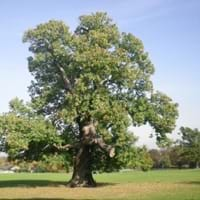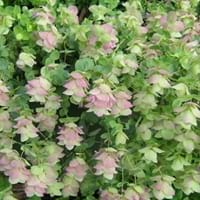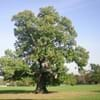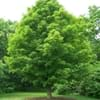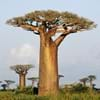Life Span
Perennial
Perennial
Origin
Eastern Asia
Hybrid origin
Types
Not Available
Kent Beauty
Amethyst Falls
Barbara Tingey
Number of Varieties
Not Available
Habitat
Temperate Regions
Grassland, Open scrub, Rocky areas
USDA Hardiness Zone
6-8
5-8
Sunset Zone
A3, 2a, 2b, 3a, 3b, 4, 5, 6, 7, 8, 9, 10, 12, 14, 15, 16, 17, 18, 19, 20, 21, 22, 23, 24
Not Available
Habit
Oval or Rounded
Clump-Forming
Minimum Height
Not Available
Minimum Width
Not Available
Flower Color
Red, Purple
Pink
Flower Color Modifier
Bicolor
Bicolor
Fruit Color
Red, Green
Not Available
Leaf Color in Spring
Green, Light Green
Dark Green
Leaf Color in Summer
Green
Dark Green
Leaf Color in Fall
Yellow, Gold
Dark Green
Leaf Color in Winter
Not Available
Light Green
Leaf Shape
Oblong or Lanceolate
Oval
Plant Season
Spring, Summer, Fall, Winter
Summer, Fall
Sunlight
Full Sun, Partial Sun, Partial shade
Full Sun
Type of Soil
Clay, Loam, Sand
Loam
The pH of Soil
Acidic, Neutral, Alkaline
Neutral, Alkaline
Soil Drainage
Well drained
Well drained
Bloom Time
Spring
Late Summer, Early Fall
Tolerances
Shade areas
Drought
Where to Plant?
Ground
Container, Ground, Pot
How to Plant?
Grafting, Seedlings
Seedlings
Plant Maintenance
Medium
Medium
Watering Requirements
Average Water Needs
Allow soil to be completely dry in between waterings, Does not require lot of watering, Water twice a day in the initial period, Water when soil is dry
In Summer
Lots of watering
Lots of watering
In Spring
Moderate
Moderate
In Winter
Average Water
Average Water
Soil pH
Acidic, Neutral, Alkaline
Neutral, Alkaline
Soil Type
Clay, Loam, Sand
Loam
Soil Drainage Capacity
Well drained
Well drained
Sun Exposure
Full Sun, Partial Sun, Partial shade
Full Sun
Pruning
Remove damaged leaves, Remove dead branches, Remove dead leaves
Remove damaged leaves, Remove dead branches, Remove dead leaves
Fertilizers
All-Purpose Liquid Fertilizer
All-Purpose Liquid Fertilizer
Pests and Diseases
Fungal Diseases, Squirrels
Red blotch
Plant Tolerance
Drought
Drought
Flowers
Insignificant
Yes
Flower Petal Number
Single
Single
Fragrant Leaf
No
Not Available
Foliage Texture
Fine
Fine
Foliage Sheen
Matte
Matte
Attracts
Not Available, Squirrels
Butterflies
Allergy
Oral Allergy, Throat itching
Not Available
Aesthetic Uses
Beautification, Landscape Designing
Showy Purposes
Beauty Benefits
Not Available
Not Available
Environmental Uses
Air purification
Air purification
Medicinal Uses
Potassium, Rich in Iron, Vitamin A, Vitamin B, Vitamin C
Bloating, Bronchitis, Cough, Cramps, Croup, Gastrointestinal disorders, Headache, Rheumatoid arthritis, Urinary tract problems
Part of Plant Used
Seeds
Leaves
Other Uses
Food for animals, Used as a nutritious food item, Used As Food, Used for its medicinal properties, Used for Landscaping
Employed in herbal medicine, Used As Food
Used As Indoor Plant
No
Yes
Used As Outdoor Plant
Yes
Yes
Garden Design
Container, Feature Plant, Foundation, Mixed Border, Rock Garden / Wall, Topiary / Bonsai / Espalier
Container, Edging, Groundcover, Mixed Border
Botanical Name
Castanea sativa
ORIGANUM 'Rose Dome'
Common Name
Sweet Chestnut, Chestnut
Ornamental Oregano
In Hindi
शाहबलूत का फल
सजावटी अजवायन
In German
Esskastanie
Ornamental Oregano
In French
châtaignier
ornement origan
In Spanish
Castaña dulce
Ornamentales orégano
In Greek
Sweet Chestnut
καλλωπιστικά Ρίγανη
In Portuguese
Castanheiro
ornamental Oregano
In Polish
słodki Chestnut
ozdobne Oregano
In Latin
Dulce Chestnut
decentius Oregano
Phylum
Magnoliophyta
Not Available
Class
Magnoliopsida
Magnoliopsida
Order
Sapindales
Not Available
Family
Aceraceae
Lamiaceae
Clade
Angiosperms, Eudicots, Rosids
Angiosperms, Eudicots
Tribe
Not Available
Mentheae
Subfamily
Not Available
Pitcairnioideae
Number of Species
Not Available
Not Available
Season and Care of Sweet Chestnut and Ornamental Oregano
Season and care of Sweet Chestnut and Ornamental Oregano is important to know. While considering everything about Sweet Chestnut and Ornamental Oregano Care, growing season is an essential factor. Sweet Chestnut season is Spring, Summer, Fall and Winter and Ornamental Oregano season is Spring, Summer, Fall and Winter. The type of soil for Sweet Chestnut is Clay, Loam, Sand and for Ornamental Oregano is Loam while the PH of soil for Sweet Chestnut is Acidic, Neutral, Alkaline and for Ornamental Oregano is Neutral, Alkaline.
Sweet Chestnut and Ornamental Oregano Physical Information
Sweet Chestnut and Ornamental Oregano physical information is very important for comparison. Sweet Chestnut height is 300.00 cm and width 370.00 cm whereas Ornamental Oregano height is Not Available and width Not Available. The color specification of Sweet Chestnut and Ornamental Oregano are as follows:
Sweet Chestnut flower color: Red and Purple
Sweet Chestnut leaf color: Green and Light Green
Ornamental Oregano flower color: Pink
- Ornamental Oregano leaf color: Dark Green
Care of Sweet Chestnut and Ornamental Oregano
Care of Sweet Chestnut and Ornamental Oregano include pruning, fertilizers, watering etc. Sweet Chestnut pruning is done Remove damaged leaves, Remove dead branches and Remove dead leaves and Ornamental Oregano pruning is done Remove damaged leaves, Remove dead branches and Remove dead leaves. In summer Sweet Chestnut needs Lots of watering and in winter, it needs Average Water. Whereas, in summer Ornamental Oregano needs Lots of watering and in winter, it needs Average Water.
